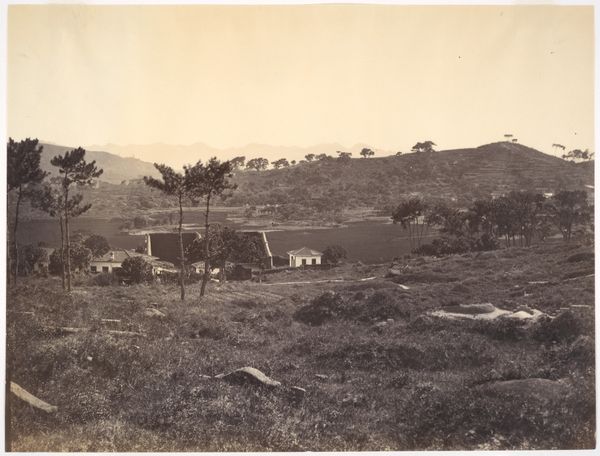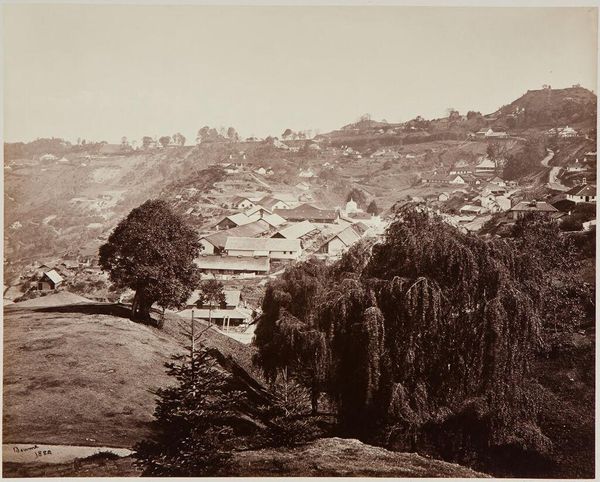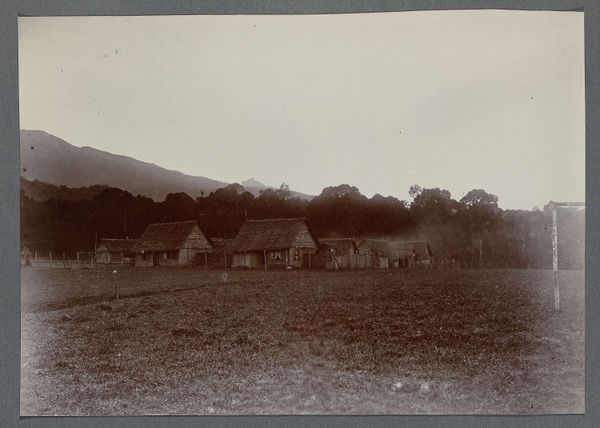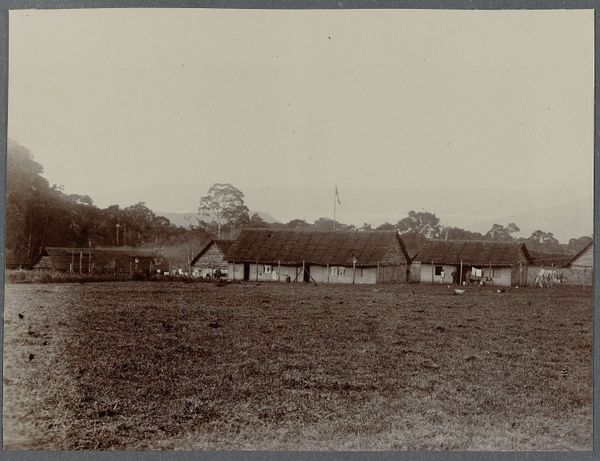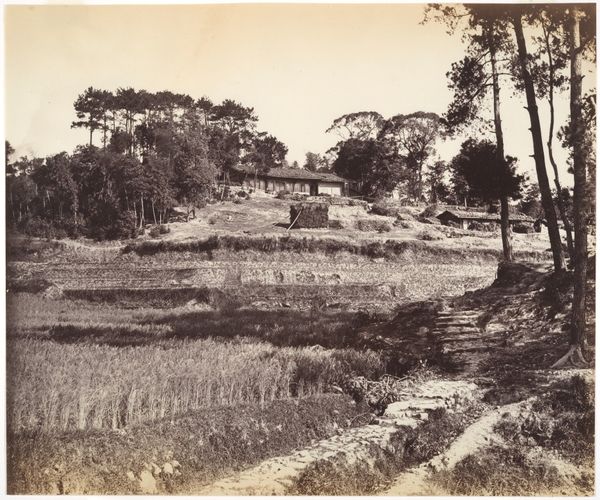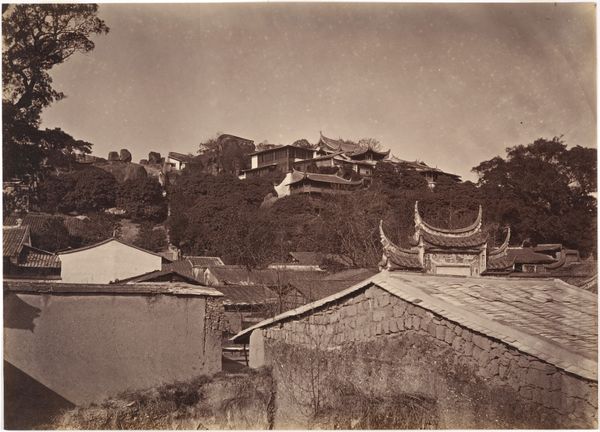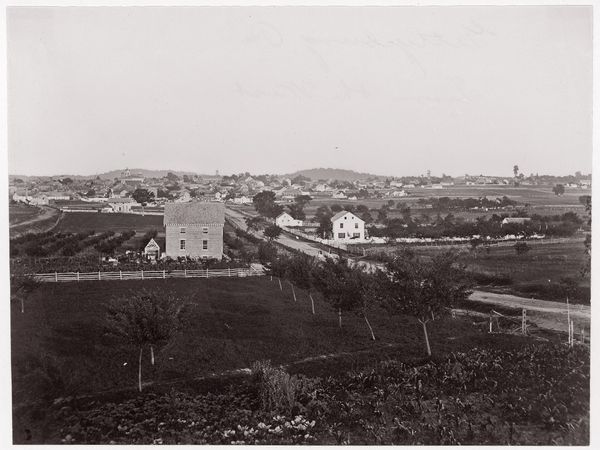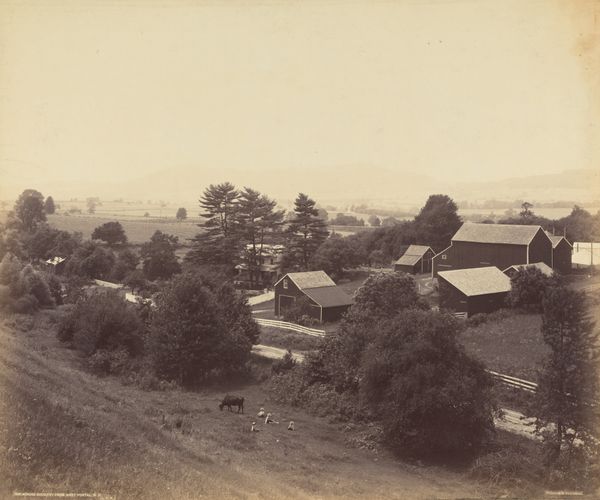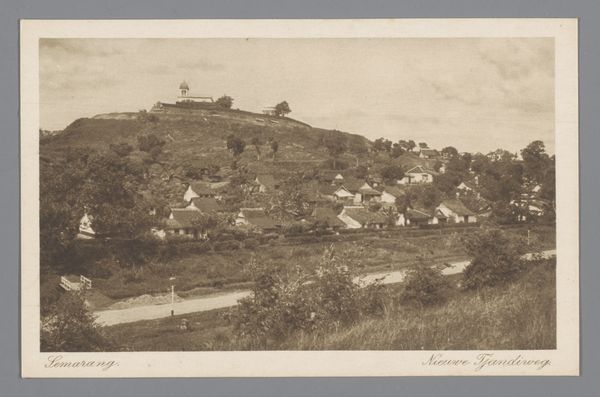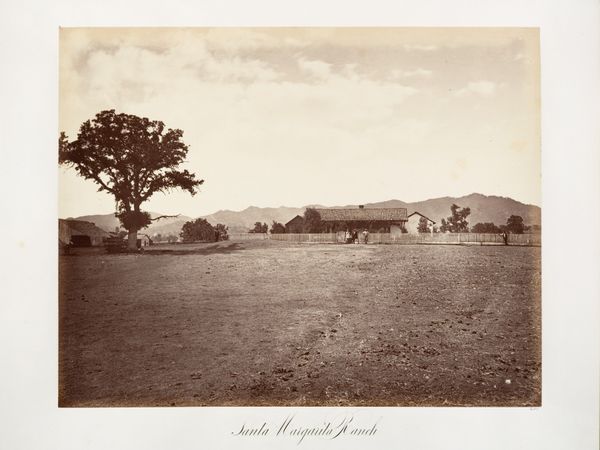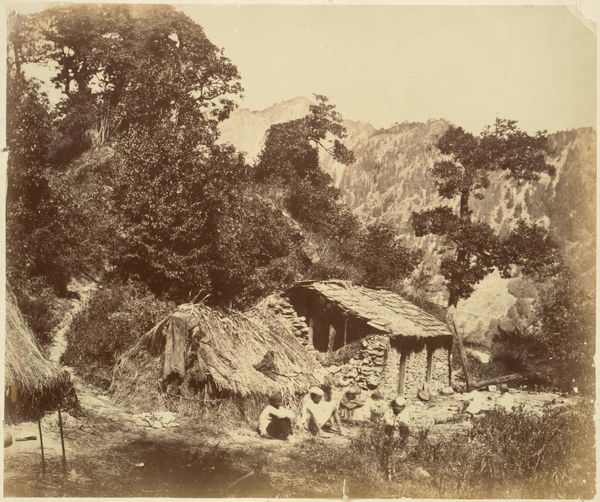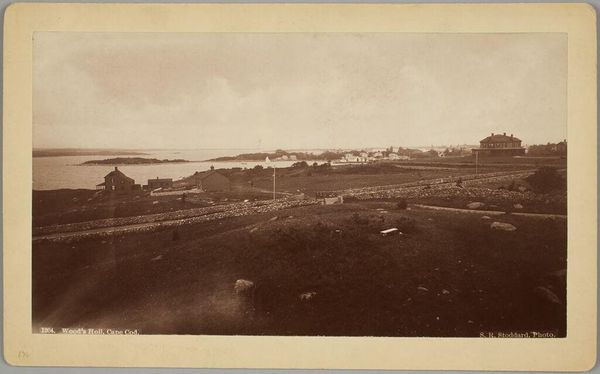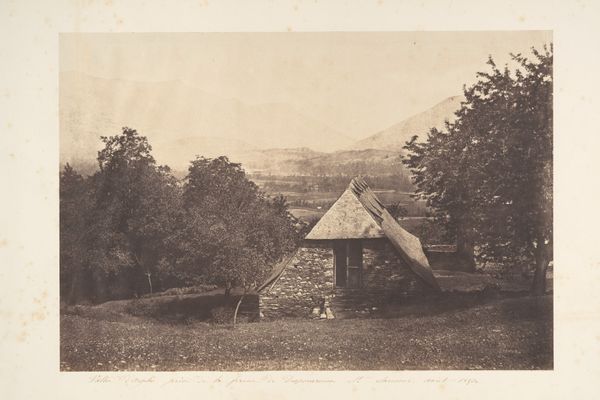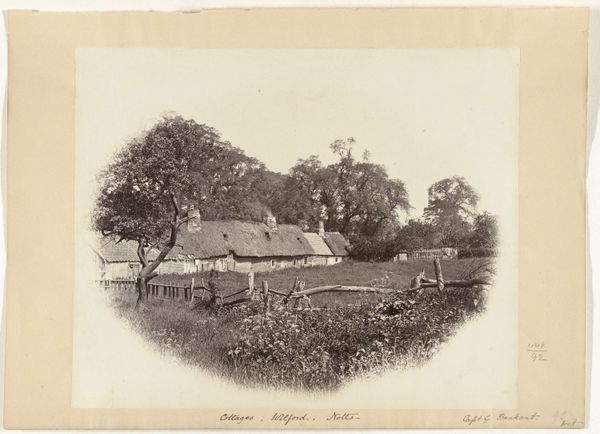
photography, architecture
#
asian-art
#
landscape
#
outdoor photography
#
photography
#
architecture
Dimensions: Image: 8 15/16 × 11 5/16 in. (22.7 × 28.7 cm)
Copyright: Public Domain
Curator: What strikes me immediately about this photograph is the stillness; it’s almost eerie, as if the scene is holding its breath. Editor: I’m drawn to that quiet, too, but I think there's also something subtly defiant happening here. We’re looking at "Bowling Alley and Raquet Court, Foochow," a photograph captured by Lai Fong around 1869. Consider the colonial context: leisure activities imposed within a Chinese landscape. Curator: Yes, those massive walls of the court look alien and angular plopped amidst that gorgeous landscape; there's the flowing scenery punctuated by human-constructed straight lines. What were the patrons thinking playing here, surrounded by all that verdant life? Editor: And who were the patrons? These leisure activities likely cater to a specific demographic: the Westerners in China. So the image really asks questions about cultural exchange, power, and even cultural appropriation, as the West brings its own architectural and sporting traditions to this area. It prompts me to examine those unequal dynamics. Curator: Do you see how Fong has created that slight sense of distance though, capturing the buildings from a rise, just before a sharp dropoff in the hill? It's so subtle that it just seems objective, yet he also puts them in an immersive surrounding as well, to blend both elements into one vision. It reminds me how different cultural interactions are portrayed when examined side by side. I guess Lai Fong felt it important enough to document with this photographic approach. Editor: Exactly! And the choice to focus on architecture is strategic. The image functions almost like an ethnographic study, implicitly mapping cultural and political power. The very existence of a bowling alley in Foochow in the late 19th century speaks volumes. The photograph makes clear how sport can serve to build community within an imperial occupation. Curator: Ultimately I sense a beautiful picture with underlying messages beneath the photograph, waiting to emerge for each of us that can hopefully lead us to further explore how cultural identity has shaped how we portray ourselves. Editor: Definitely, Lai Fong leaves us a lot to think about.
Comments
No comments
Be the first to comment and join the conversation on the ultimate creative platform.
